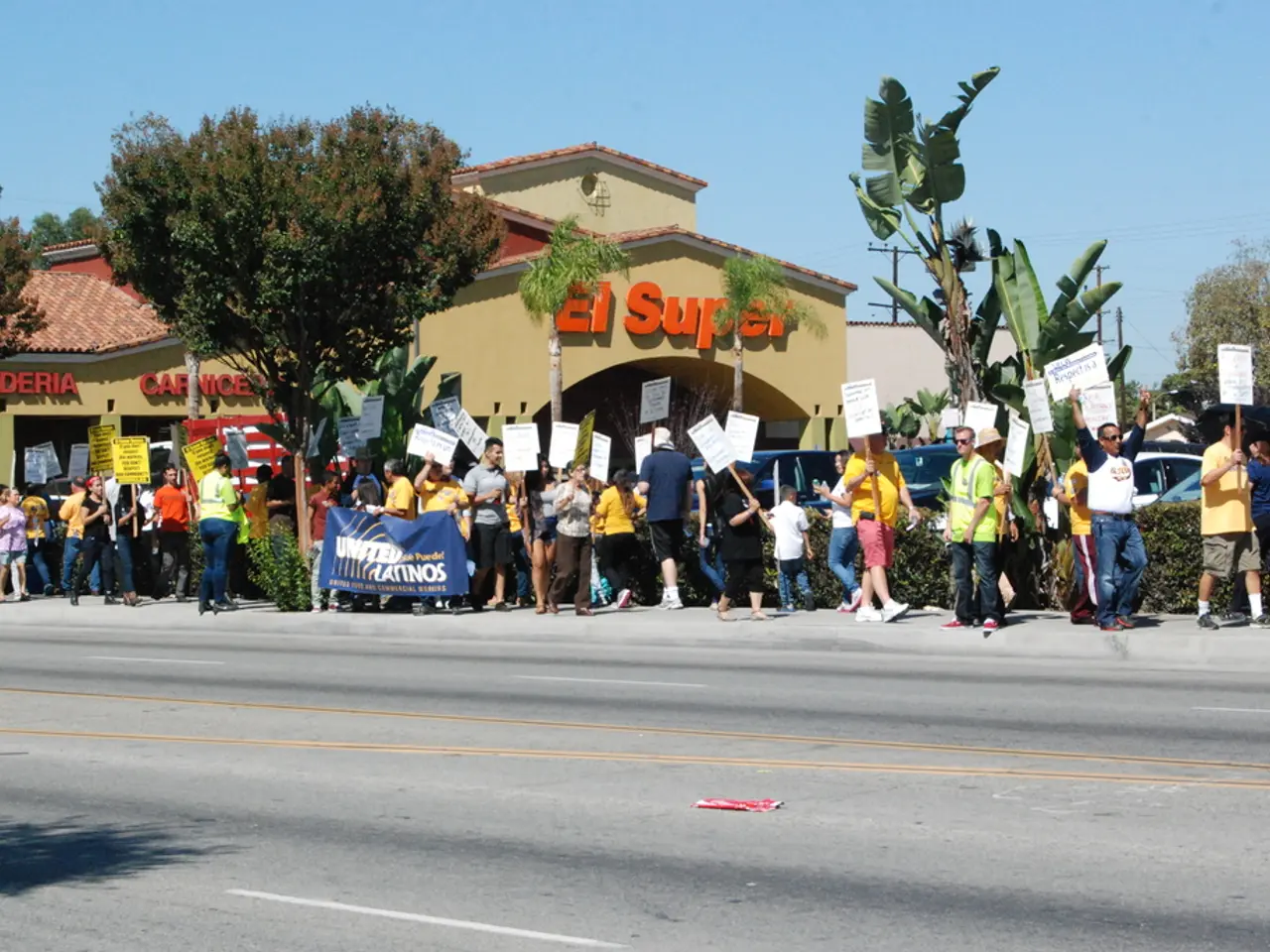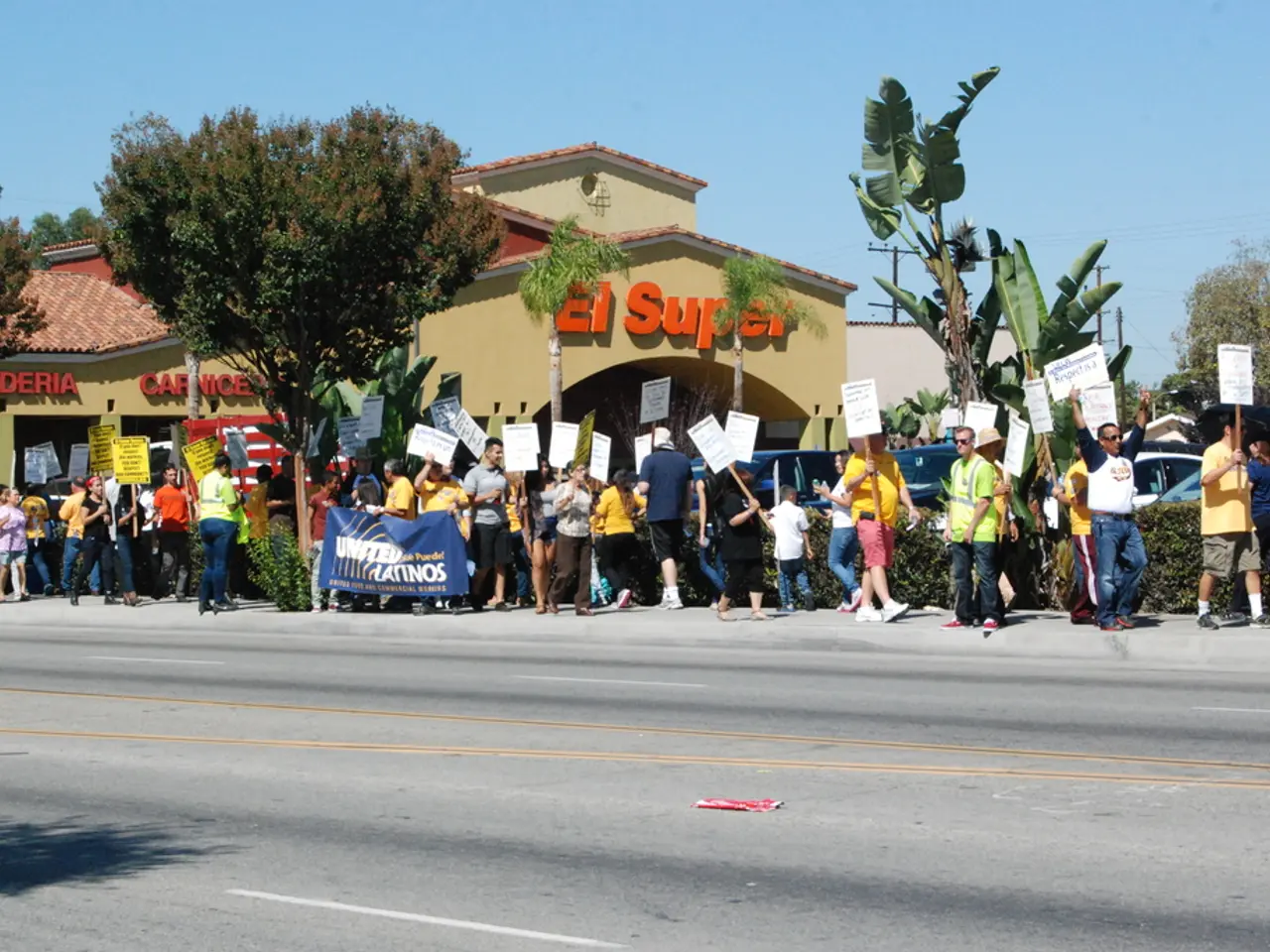United States to Impose 15% Tariff on Imports from South Korea Under Revised Agreement
The United States and South Korea have reached a significant trade deal, which includes substantial investments, energy purchases, and adjustments to tariffs on imported goods. Here's a breakdown of the key elements:
Investments
South Korea has pledged to invest a staggering $350 billion in the United States, with $150 billion earmarked for South Korean companies entering the U.S. shipbuilding sector. The remaining funds will support investments in semiconductor, technology, and energy industries [1][2][3].
Energy Purchases
South Korea will purchase $100 billion worth of American energy products, primarily liquefied natural gas (LNG) and other energy imports. This move aims to bolster U.S. energy exports [1][2][3].
Tariffs on South Korean Goods
- A new tariff rate of 15% has been set on most South Korean autos and auto parts imported into the U.S. This is a reduction from a previously planned 25%. The 15% tariff covers major Korean car brands such as Hyundai, Kia, Genesis, and certain models from Chevrolet imported from South Korea [1][2][4].
- Tariffs on South Korean steel, aluminum, and copper will remain unchanged and are not part of this agreement [2][4].
- Importantly, South Korea will accept American exports including cars, trucks, agricultural goods (such as rice and beef), with no new tariffs imposed on these U.S. products [3][4].
Trade Openness and Regulatory Issues
South Korea has agreed to be "completely open" to trade and to accept American products broadly. There were also conditions related to South Korea withdrawing regulatory proposals targeting U.S. tech companies like Google and Meta, aligning with U.S. digital trade interests [1][3].
Timeline and Future Investments
The energy purchases will occur "over the next 3.5 years," and additional South Korean investments will be announced later [4]. President Donald Trump announced a trade deal with South Korea, reducing tariffs on imports from 25% to 15% [4].
Notable Exceptions and Clarifications
- The details of the $350 billion investment, including financing, time frame, and binding terms, are not yet clear [4].
- Amid the last-minute push to reach a tariff agreement, Samsung Electronics inked a $16.5 billion chip deal with Tesla, and LG Energy Solution also signed a $4.3 billion deal to supply Tesla with energy storage system batteries [4].
- The South Korean government understands that some profits could be reinvested from the $350 billion fund [4].
- Semiconductor and pharmaceutical exports from the U.S. to South Korea will not be treated more harshly than those from other countries [4].
- South Korea's rice and beef markets will not be opened further, and discussions over U.S. demands on food regulations continue [4].
- U.S. Commerce Secretary Howard Lutnick stated that 90% of the profits from the $350 billion fund are "going to the American people" [4].
- Existing investment plans by South Korean companies will be part of the $350 billion fund [4].
- Steel, aluminum, and copper were not covered by the new deal [4].
Presidential Meetings
President Trump said President Lee Jae Myung will visit the White House "within the next two weeks" for his first meeting with the U.S. president [4].
This trade deal mirrors terms that the U.S. reached recently with other trading partners like Japan and the European Union, balancing tariff reductions with South Korean commitments to massive investments in U.S. manufacturing and energy sectors. South Korean President Lee Jae-myung was involved in finalizing the deal, marking a significant diplomatic and economic agreement [1][2][3][4].
- The new trade deal between the United States and South Korea will see South Korea investing a substantial $350 billion in the U.S., with $150 billion directed towards South Korean companies entering the U.S. shipbuilding sector.
- South Korea has pledged to purchase $100 billion worth of American energy products, including liquefied natural gas (LNG) and other energy imports, to bolster U.S. energy exports.
- A 15% tariff has been set on most South Korean autos and auto parts imported into the U.S., a reduction from a previously planned 25%. This includes major Korean car brands such as Hyundai, Kia, Genesis, and certain models from Chevrolet imported from South Korea.
- The South Korean government has agreed to be "completely open" to trade and to accept American products broadly, and it has also withdrawn regulatory proposals targeting U.S. tech companies like Google and Meta to align with U.S. digital trade interests.
- The energy purchases from South Korea will occur over the next 3.5 years, and additional South Korean investments will be announced later.
- Existing investment plans by South Korean companies will be part of the $350 billion fund. Additionally, South Korea's rice and beef markets will not be opened further, and discussions over U.S. demands on food regulations continue.








